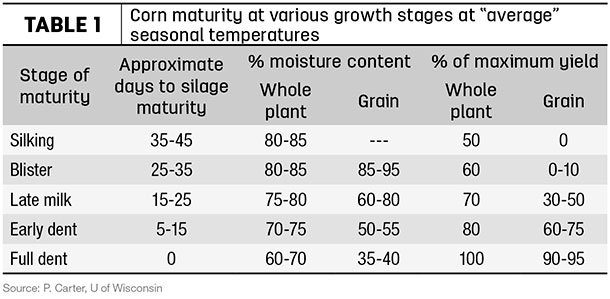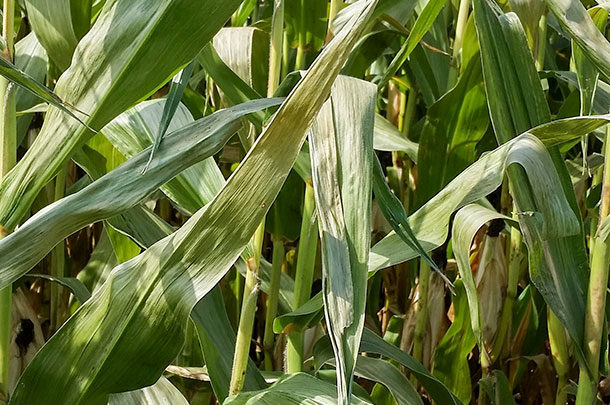Table 1 gives a general idea of how long it takes the crop to mature from various growth stages, assuming “average” seasonal temperatures. For example, if your corn is currently in the blister or early milk stage, it will probably take around 30 days of average temperatures for it to reach normal silage maturity.

Timing the chop after a frost
What if you get a frost before the crop is dented? Corn plants may recover after a light frost and mature normally, but will be killed if temperatures drop to 32°F for several hours, or 28°F for only a few minutes. If you think you have suffered a killing frost, don’t panic; you can still make good quality silage. If your corn is in the milk stage (around 80 percent whole-plant moisture) and you get a killing frost, don’t rush to start chopping immediately just because you see the leaves turning that light gray color and starting to dry up. If it was too wet to chop yesterday before the frost, what makes you think it is going to be too dry to chop tomorrow?
Chopping too early will lead to excessive “juicing” and the loss of valuable nutrients in the effluent. The moisture in the plant will only drop 0.5 to 1 percent per day on average, so it may be nearly two weeks until it is dry enough to chop. Wait at least three to five days to accurately evaluate the level of frost damage. Then monitor whole-plant moisture levels closely and chop at the appropriate moisture level for your storage structure (low-60s for upright silos, mid-60s for bags and mid- to upper-60s for bunkers or piles). Be sure to treat with a high-quality forage inoculant to get a fast and efficient fermentation.
What about the quality?
How will the silage quality be affected? Here are a few things to remember:
- Starch (and total dry matter yield) will be lower than normal (note the reduction in silage and grain yield in Table 1). You may need to chop additional acres.
- Sugar levels in the forage will be higher than normal (plant sugars did not have the opportunity to be converted into starch). However, it will probably not offset the lower starch content. Overall energy will be lower than normal.
- Fiber will be higher than normal, but may be more digestible depending upon the maturity when frosted. It just might feed better than it looks on paper.
The bottom line is frosted corn can still make a very good feed; just don’t get in a hurry. Remember the old saying, “Haste makes waste!” ![]()
Gene P. Gengelbach is a nutritionist for Agri-King.
PHOTO: Photo courtesy of University of Minnesota Extension.












